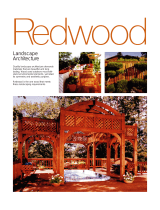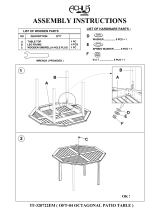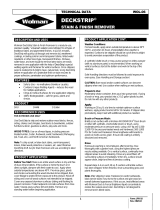
Smog
Air Pollution
Acid Rain
Water Pollution
Global Warming
Compared with redwood,
is plastic lumber green
or just green wash?
Here are some charts to help you decide.
A recent Life Cycle Assessment measured the
environmental impact of redwood and plastic decking.
As you can see, in each case, the plastic decking has a
significantly higher environmental impact than redwood.
If eco-friendly is important to you, it doesn’t get any
greener than redwood. If you would like to know more
about the environmental advantages of redwood; or to
download a pdf of the Life Cycle Assessment Executive
Summary, visit us at RealStrongRedwood.com
Preserving and Nurturing.
A sustainable FUTURE for
our redwood forests.
All the members of the California Redwood Association
(CRA) are committed to sound forest management
practices to ensure that our forests will remain healthy,
beautiful and productive for generations to come.
We take pride that 100% of CRA member-owned
timberlands are certified as well-managed by the Forest
Stewardship Council
TM
(FSC
®
). When you see the FSC
icon in the store, you can rest assured that the lumber
you are buying and building with comes from healthy
forests. That means responsible harvesting at sustainable
levels as well as the protection of natural habitats.
.20
.15
.10
.05
.00
Our sustainably managed forests
pull carbon out of the atmosphere
and store it throughout their life.
That’s why the redwood bar is
below zero. It doesn’t contribute
any carbon at all. It removes carbon
and stores it.
When you build with redwood,
you become part of the climate
change solution.
If you like your air without
harmful particulates (and who
doesn’t?) redwood is the clear
winner. Plastic-composite
lumber introduces 26-times
more particulate matter
into our air.
When you choose redwood,
we can all breathe a little easier.
Do you like breathing clean air?
Is anybody really in favor of
dirty air?
Making plastic-composite
lumber using recycled plastic
contributes three times more
smog to the atmosphere.
Introducing too much
nitrogen into a pond or
stream can produce algae
blooms which destroy the
habitat for many species
of fish, creating what are
known as “dead zones.”
It’s called eutrophication
and plastic lumber is 9
times more damaging to
marine habitats.
Water is a closed system.
We’re drinking the same
water as the dinosaurs.
So it’s important to keep
harmful chemicals such as
sulfur dioxide out. That’s
where acid rain comes from.
Plastic lumber contributes
8 times more acid to the
water supply.
150
125
100
75
50
25
0
-25
-50
-75
-100
-125
-150
-175
Carbon
emissions
cause
global
warming.
Redwood
Plastic
Carbon emissions (kg)
Ozone (kg)
Particulate Matter (kg)
Nitrogen (kg)
30
25
20
15
10
5
0
3x
more
smog
26x
more
particulate
matter
3.0
2.5
2.0
1.5
1.0
.5
0
8x
more
acid
.25
.20
.15
.10
.05
.00
9x
more
water
pollution
FSC-C110720
FSC-C018043
FSC-C004495
FSC-C110720
FSC-C018043
FSC-C004495
Sulfur Dioxide (kg)
Redwood
Redwood
Redwood
Redwood
Plastic
Plastic
Plastic
Plastic










